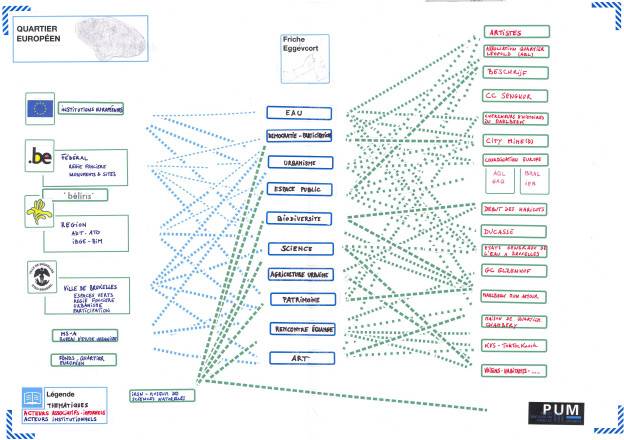2 decades of Mapping: a repertoire , 2023

Experience or description?
Gaëlle Vallée-Tourangeau, behavioural scientist at Kingston Business School in London, asked participants in her lab to add up long numbers of up to 11 digits or more. One group was only allowed to write down the results with pen on paper, while a second group was offered cards with numbers they could manipulate. The second group performed remarkably better, in this case meaning less error, faster and with less effort. The experiment confirmed prof Vallée-Tourangeau’s contention that allowing people to manipulate information not only with their minds through mental processes, but also through hands-on manipulation of a representation of the information, leads to better outcomes.
She even goes as far as to say that experience prevails over descriptions. People make better decisions based on experience than on the description of the options. She uses the example of a Lottery: based on descriptions players tend to take the risky low-probability option, yet relying on experience instead, they take the safer option and correct for the fact that the desirable option is very rare and dangerous.
Behavioural change & mapping
Prof Vallée-Tourangeau teaches us a lot. About how to inspire behavioural change in people - towards something more sustainable or fair, for instance-, and how to share important information. Yet, for us, it was a confirmation of our belief in mapping activities. We have been organising mapping activities since 2004. Consciously at least, because before that we already engaged in activities in which bent over tables or floors, we re-positioned objects or cards with texts on maps representing buildings, neighbourhoods or cities.
In our experience, mapping is both a means and an end. A means to allow citizens to manipulate information that interferes with their lives but only reaches them in texts and brochures. And an end to share the lessons learned in a visual and more comprehensive form.
In 2004, we organised MapRAC, a mapping of possible future of one of the largest administrative buildings in the country. In 2006, Towards created a first atlas of alternative (subjective) representations of Brussels. Our thoughts on mapping at the time were summarised in this article Politics of Mapping. In 2007, with DELTA, we extended our range of participants to young people in Tottenham North London, who used various media to reflect upon their living environment.
As part of Torino World Design Capital 2008, we organised a complexity mapping workshop Christian Nold and Ezio Manzini lifting the practice to a new level. This resulted in this publication.
In 2010 we created the ROUTER, a high speed tool allowing passers-by of a public space to find their place in a specific context by manipulating buttons on a box. In a similar vein, the WORKSHOP TOOLBOX allowed over 100 participants dispersed over 12 locations in Brussels to map their thoughts and ambitions in a way that could be compared and contrasted afterwards.
Our work in the EU neighbourhood (2011>2017)was guided by mapping: it emerged from MAP-IT (on micro-initiatives in a monofunctional area), gathered invaluable information through the workshop series FORMA (a clay model of the valley to re-visit water landscapes, power relations and urban futures), and looked back upon its activities with its own ATLAS, both a traveling object and a website. And in this SUBJECTIVE ATLAS of Brussels article we looked in the rear-view mirror.
The recently completed La Pile project (2019>2024) on using and producing energy at human scale, enjoyed a similar intimate relationship with mappings. Information gathered from a visit to fraternal projects in Rio de Janeiro lead to this MAP on scanning my agency in the electricity landscape, and information gathered for the starting exhibition was made accessible through a MAP signposting citizens through the energy landscape and the cost of energy. To make the information more palpable, a SERIOUS GAME was developed and played with various groups.
In the Brussels neighbourhood of lower Saint-Gilles, various workshops were organised to find out where exactly the energy-projects and prototypes could touch the ground. All the information was collected in a heat map. Through our work in the Brussels Quartier Nord, the map produced was a collection of alternative energy-renovation options we had come across. Finally, with the help of Fanny Monier the "open ended design" trajectory of La pile was also mapped out.
Also read:
City Mine(d) – Extension du domaine des Tools in: Alter Échos n° 175, Baudouin Massart, 2004
Learning from Brussels. An irreductive approach to architectural and urban problématiques ? in: Belgian Journal of Geography, Isabel Doucet, 2011